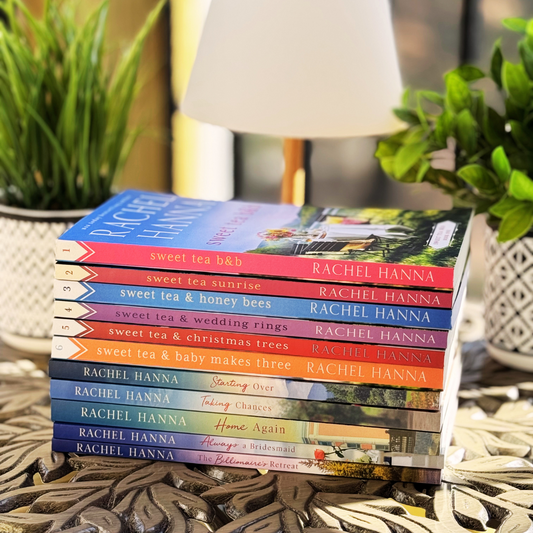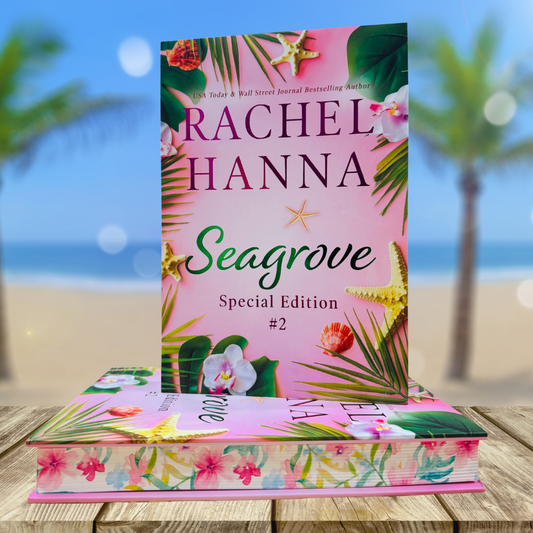FAQ for Writers
Thinking About Writing a Book? Read This First.
I get messages all the time from people who want to write a book and don’t know where to start. If that’s you, let me say: congratulations on even thinking about it! That first spark of an idea is something special.
That said, I want to be upfront with you. I’m a full-time author, which means my days are packed with writing, marketing, running my store, and connecting with my readers. Because of that, I don’t offer coaching or one-on-one help. I simply don’t have the time, and I need to stay focused on serving the readers who make this career possible.
But—I do want to point you in the right direction if you're serious about getting started. So here are some practical steps to begin your author journey:
1. Start with YouTube.
Search for “Kindle Direct Publishing” (or “KDP”) on YouTube. There are tons of free tutorials walking you through everything from setting up your account to formatting your manuscript and uploading your book. This is often the fastest and most beginner-friendly way to understand the basics.
2. Set Up Your KDP Account.
Go to kdp.amazon.com and create a free account. You’ll need basic information like your name, address, tax info, and bank details so Amazon can pay you. Once your account is set up, you can publish ebooks, paperbacks, and even hardcovers. It’s free to use—Amazon takes a percentage of each sale, but there are no upfront fees.
3. Learn the Difference Between Indie and Traditional Publishing.
If you publish through traditional publishing, you usually need a literary agent who pitches your book to publishers. If accepted, the publisher handles editing, cover design, printing, and some marketing. In exchange, you give up control and a percentage of your earnings. The process can take years and is highly competitive.
With indie (or self) publishing, you are the publisher. You maintain full control and higher royalties, but you’re also responsible for everything—writing, editing, hiring a cover designer, uploading your book, and marketing it. It takes work, but many authors have built successful careers this way.
4. Be Cautious About “Publishers” Who Want Your Money.
If a company emails you saying they want to publish your book—but they’re asking you to pay them thousands of dollars—that’s not a real publisher. That’s likely what’s called a vanity press or a hybrid publisher (some of which are simply scams in disguise).
Real publishers don’t ask you for money.
They pay you once your book sells. They typically don’t cold-email authors out of the blue. Instead, you submit your manuscript to literary agents who then pitch it to editors at publishing houses. If you haven’t submitted anything yet and someone reaches out to “publish” your book, that’s a red flag.
Here’s how to tell the difference:
-
Legit publishers do not charge you for editing, design, or printing.
-
Vanity presses make their money from you, not from readers buying your book.
-
Watch out for upsells, confusing contracts, and promises of “bestseller status.”
Always do your research. Look up company names along with the word “scam” or “reviews.” Sites like Writer Beware and Absolute Write forums can also help you avoid predatory companies.
5. Join Author Facebook Groups.
A great starting point is the group 20BooksTo50K® on Facebook. It’s full of authors sharing advice, tips, and real-world experience. Use the group’s search feature before asking questions—it’s a goldmine of knowledge if you’re willing to do a little digging.
6. Read Books About Self-Publishing.
Head to Amazon and search for books on self-publishing, book marketing, or advertising for authors. There are plenty of great resources written by authors who’ve been in your shoes. Look for books with strong reviews that are less than a couple years old to make sure you’re getting up-to-date information.
7. Be Prepared to Learn a Lot.
Writing a book is just the beginning. If you want to actually sell books, you’ll need to learn about marketing, ads, email newsletters, covers, blurbs, and more. But the good news? You don’t have to figure it all out overnight. One step at a time.
This path isn’t easy—but it’s incredibly rewarding. If you’re willing to put in the work and stay consistent, you can make this dream a reality.
Wishing you the best on your journey,
—Rachel Hanna




